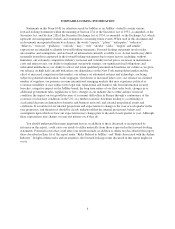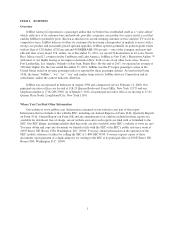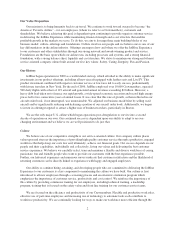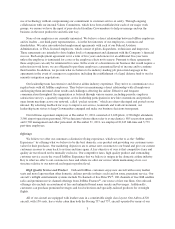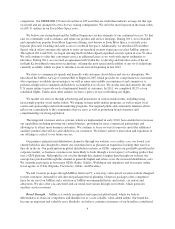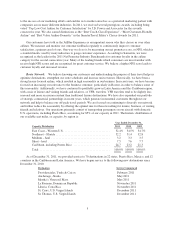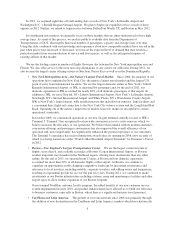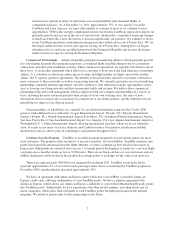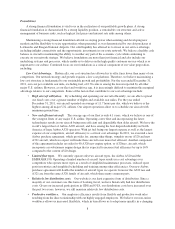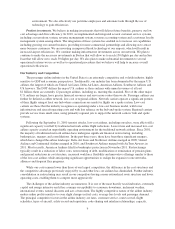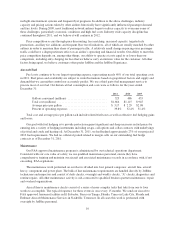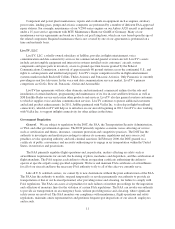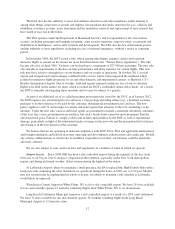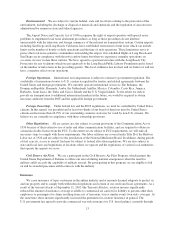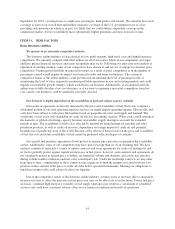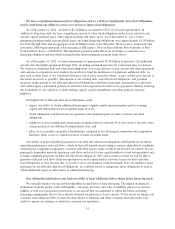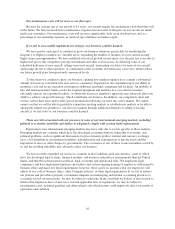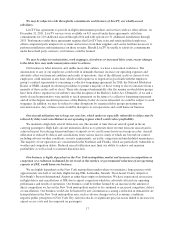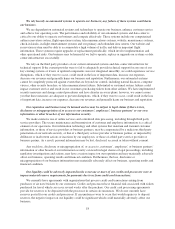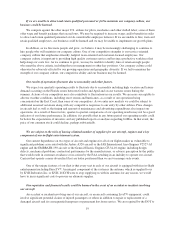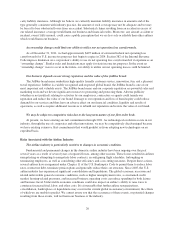JetBlue Airlines 2011 Annual Report Download - page 20
Download and view the complete annual report
Please find page 20 of the 2011 JetBlue Airlines annual report below. You can navigate through the pages in the report by either clicking on the pages listed below, or by using the keyword search tool below to find specific information within the annual report.
in-flight entertainment systems and frequent flyer programs. In addition to the above challenges, industry
capacity and pricing actions taken by other airlines historically have significantly influenced passenger demand
and fare levels. During 2009, most traditional network airlines began to reduce capacity to overcome some of
these challenges, particularly economic conditions and high fuel costs. Industry wide capacity discipline has
continued throughout 2011, and we believe it will continue in 2012.
Price competition occurs through price discounting, fare matching, increased capacity, targeted sale
promotions, ancillary fee additions and frequent flyer travel initiatives, all of which are usually matched by other
airlines in order to maintain their share of passenger traffic. A relatively small change in pricing or in passenger
traffic could have a disproportionate effect on an airline’s operating and financial results. Our ability to meet this
price competition depends on, among other things, our ability to operate at costs equal to or lower than our
competitors, including only charging for fees that we believe carry an intrinsic value for the customer. All other
factors being equal, we believe customers often prefer JetBlue and the JetBlue Experience.
Aircraft Fuel
Fuel costs continue to be our largest operating expense, representing nearly 40% of our total operating costs
in 2011. Fuel prices and availability are subject to wide fluctuations based on geopolitical factors and supply and
demand that we can neither control nor accurately predict. We use a third party fuel management service to
procure most of our fuel. Our historical fuel consumption and costs were as follows for the years ended
December 31:
2011 2010 2009
Gallons consumed (millions) ........................... 525 486 455
Total cost (millions) .................................. $1,664 $1,115 $ 945
Average price per gallon .............................. $ 3.17 $ 2.29 $2.08
Percent of operating expenses .......................... 39.8% 32.4% 31.4%
Total cost and average price per gallon each include related fuel taxes as well as effective fuel hedging gains
and losses.
Our goal with fuel hedging is to provide protection against significant and sharp increases in fuel prices by
entering into a variety of hedging instruments including swaps, call options and collar contracts with underlyings
of jet fuel and crude and heating oil. At December 31, 2011, we had hedged approximately 27% of our projected
2012 fuel requirements. We had no collateral posted related to margin calls on our outstanding fuel hedge
contracts as of December 31, 2011.
Maintenance
Our FAA-approved maintenance program is administered by our technical operations department.
Consistent with our core value of safety, we use qualified maintenance personnel, ensure they have
comprehensive training and maintain our aircraft and associated maintenance records in accordance with, if not
exceeding, FAA regulations.
The maintenance work performed on our fleet is divided into four general categories: aircraft line, aircraft
heavy, component and power plant. The bulk of line maintenance requirements are handled directly by JetBlue
technicians and inspectors and consist of daily checks, overnight and weekly checks, “A” checks, diagnostics and
routine repairs. All other maintenance activity is sub-contracted to qualified business partner maintenance, repair
and overhaul organizations.
Aircraft heavy maintenance checks consist of a series of more complex tasks that take from one to four
weeks to accomplish. The typical frequency for these events is once every 15 months. We send our aircraft to
FAA approved Aeroman facilities in El Salvador, Pemco in Tampa, Florida, Timco in Lake City, Florida and
Embraer Aircraft Maintenance Services in Nashville, Tennessee. In all cases this work is performed with
oversight by JetBlue personnel.
10


